Where Our Fellows Are From & Where They Go
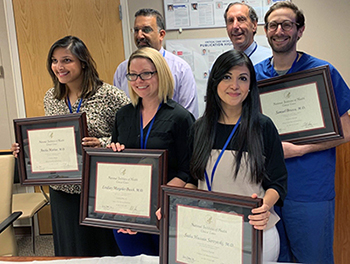
Brooke K. Decker, MD, CIC
Margaret M. Parker, MD, MCCM
Matthew Brenner, MD
Mark T. Gladwin, MD
Bettina Lundgren, MD, DMSci
Jens D. Lundgren, MD
Jon Sevransky, MD, MHS
Souvik Chatterjee, MD
Rachel Scheraga, MD
Brandon M. Wiley, MD
Daniel A. Sweeney, MD
Taison Bell, MD
SeungHye Han, MD, MPH
Nirav G. Shah, MD, FCCP
Cameron Dezfulian, MD, FAHA
Paul Nyquist, MD/MPH, FAHA, FCCM, FANA, FAAN
Alumni Reflections
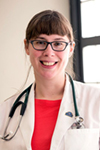
When I first arrived at the National Institutes of Health in July 2010, I couldn't believe the people I was meeting. Walking through hallways with portraits of medicine's greats filled me with a sense that I was contributing (in a very small way) to the clinical center's history. In my own department, names on seminal papers became real people, excellent clinicians, researchers, and the mentors who were expecting a lot out of me (and worked very hard to help me grow into those expectations.) I believe the quality of education provided by the National Institutes of Health Critical Care Medicine Department is second to none, and equipped me to be a leader in my career. I am incredibly humbled when I reflect on the time I spent at the clinical center and the inspiring patients for whom I had the privilege of caring. Not only was I rewarded every day with new knowledge and experience in rarely recognized, or treated conditions, but every patient was there not only to get better, but to contribute to overall knowledge -- with the hope that perhaps others with their disease may not suffer the same fate. I would do it all again in a heartbeat.
Brooke K. Decker, MD, CIC
CCMD Position: Critical Care Medicine Fellow, Class of 2010
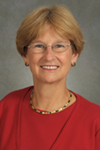
I went to the NIH in 1980 after completing my residency in Internal Medicine. Within 6 months, three of the four physicians in the ICU at the time had left. Dr. Parrillo took over as Chief of the Critical Care Medicine Department and established a strong academic fellowship. I was the first "fellow". I stayed at the NIH until 1991. During my time at the NIH, I learned a tremendous amount about clinical critical care (including a lot about some very obscure diseases) as well as clinical research. Through the academic environment, along with strong mentoring and exposure to some of the most renowned scientists in their fields, I developed clinical, investigative, and leadership skills that enabled me to go on and be highly successful in my career in critical care medicine.
Margaret M. Parker, MD, MCCM
CCMD Position: Critical Care Medicine Fellow, Class of 1982

I completed my NIH critical care fellowship more than 20 years ago (1987). My career has been as a faculty member in academic medicine and pulmonary and critical with care teaching, research, and clinical patient care roles at the University of California, Irvine. My research has focused on the translation of laser optical technologies for clinical diagnostics and therapeutics in pulmonary and critical care medicine. The training I received at the NIH Critical Care Medicine Department was invaluable in allowing me to pursue my career because of the unique combination of exposure and training provided by the program in: 1) clinical medicine, 2) clinical research, 3) basic science research, and 4) translational research. By combining these four fundamental elements in a strong and integrated environment, the NIH critical care fellowship training provided an ideal preparation for an academic medical career.
Matthew Brenner, MD
CCMD Position: Critical Care Medicine Fellow, Class of 1984

For the entirety of my career I have focused on bench-to-bedside translational research with an emphasis on the exploration of fundamental mechanistic pathways in both normal volunteers and patients with sickle cell disease and pulmonary hypertension. In one respect I have an almost unique experience in biomedicine, having lead clinical and research programs in both the intramural and extramural worlds. I had the honor of working for more than 10 years in the intramural NIH program at Bethesda, first as a research fellow and then rising through the ranks to the position of tenured Branch Chief in the NHLBI. My work at the NIH involved basic biochemistry, translational physiological studies, and phase I and II drug development, including partnerships with Industry. For the last 2-years I have worked successfully in the extramural world, writing grants (a "stimulating" experience!), building a research institute and leading a pulmonary division with 62 faculty with more than 20-million in NIH grants. I believe these varied experiences have provided me with a broad grasp of the challenges and opportunities before us in both the intramural and extramural worlds.
Mark T. Gladwin, MD
CCMD Position: Critical Care Medicine Fellow, Class of 1995
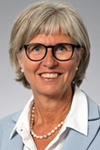
Working as a Fogarty Fellow at NIH from 1987-89 was a life experience. I made friends and colleagues for life that I would not have made. The introduction to academic medicine and microbiology made me choose my career in medicine. The experience and skills I picked up while working with inspired and inspiring leaders and clinicians was valuable to launching and developing my career. This enabled me to obtain the highly prestigious jobs within microbiology in Denmark.
Bettina Lundgren, MD, DMSci
CCMD Position: Visiting Research Fellow

Being a curious young medical student, coming to NIH as a Fogarty fellow opened my eyes to a new dimension of how research can be done. Superb training in research methodology – mentors being open to suggestions, but them ensuring at the same time that the research question is good, relevant and focused and the design of the experiments relevantly critiqued. The genuine support and enthusiasm by your peers and how important that is for a junior wannabe researcher ability to maintain focus – a lesson for life as you move up the grades. Meeting similar wannabes from all parts of the world – a source of inspiration and appreciation of the diversity of this globe brought together and functioning across cultural boarder for a common purpose (research of course). Personal friendships, still rooting for the Redskins (after all these years), and a sense of coming home when arriving at Dulles.
Jens D. Lundgren, MD
CCMD Position: Visiting Research Fellow
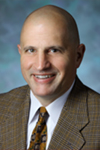
I chose training at NIH for critical care medicine because I knew that I wanted to focus my academic career around the care of patients with life threatening illness and injury. The faculty, alumni , and colleagues made at NIH have been instrumental in allowing me to develop my career to one focused on a mixture of being a clinical trialist, mentoring fellows and residents in clinical research, directing an ICU and overseeing a number of ICU directors, and caring for the critically ill. Many of the academic opportunities that have become available to me in the almost two decades since completion of the program, including becoming associate editor of Critical Care Medicine, Senior Associate Editor of Critical Care Explorations, Editor and Chair of the iCritical Care Podcast Committee and Chair of the Discovery Research Network of SCCM , have involved at least one alumnus of CCMD.
Jon Sevransky, MD, MHS
CCMD Position: Critical Care Medicine Fellow, Class of 1994
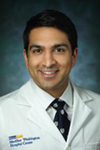
I joined the NIH Department of Critical Care as a fellow in 2013 and completed my training in 2018. My experience was invaluable in preparing me for a role in academic critical care medicine. The clinical training is excellent and is bolstered by internationally recognized faculty who are thought leaders in the field. Through engaged mentorship, these same faculty members along with the program leadership provide a supportive environment to allow fellows to find and excel in varied career paths. The NIH-CCMD also exposed me to advanced critical thinking and its application in medicine, from bench to bedside to populations. The variety of experiences, both clinical and research, at the NIH is unparalleled and ultimately develops leaders in academic critical care medicine. My experience with NIH-CCMD provided me with the confidence to continually strive for excellence in critical care medicine.
Souvik Chatterjee, MD
CCMD Position: Critical Care Medicine Fellow, Class of 2013

I was a critical care fellow in the Critical Care Medicine Department (CCMD) at NIH from 2009 to 2013. I also completed pulmonary medicine training at University of Maryland during this time period. My NIH fellowship experience has given me a solid foundation for a successful career in academic medicine. The most valuable asset of the fellowship is the guidance from the senior staff. The support and mentorship during my fellowship and beyond has built lifelong relationships and guidance for my career. I still feel the support from the CCMD staff when I see them in the audience when I am giving oral presentations at national meetings. The other unique feature of the fellowship, that has been an essential asset to my career, is the protected time for research. This guaranteed research time allowed me to gain the necessary basic science skills to improve my probability of success in the competitive physician scientist track. Overall, the CCMD fellowship at NIH equipped me with the mentorship, clinical and research skills, and connections that has been instrumental in my success.
Rachel Scheraga, MD
CCMD Position: Critical Care Medicine Fellow, Class of 2009

My fellowship at the NIH was a pivotal experience that shaped my career as a clinician and researcher. The clinical experience at the NIH was founded in a comprehensive and thoughtful approach to patient care. Daily rounds mixed evidence based medicine with sage clinical wisdom through a truly multidisciplinary practice model. On a typical day I was able to learn from pharmacists, nephrologists, oncologists, pulmonologists and infectious disease specialists – each of whom were nationally or internationally recognized experts in their fields. These daily interactions are truly unique to the NIH. The clinical environment is a stimulating academic milieu that requires you to push your limits and find answers to challenging problems. In addition, these daily interactions with different medical specialties help foster novel research questions that can define your academic career. Layered within the clinical experience of the NIH is a strong foundation of mentorship. The CCM Faculty was clearly focused on ensuring that I was supported and positioned to develop a successful career in academic medicine. In summary, I believe that the NIH fellowship was an invaluable experience that placed me on a trajectory to be a successful physician, researcher and leader.
Brandon M. Wiley, MD
CCMD Position: Critical Care Medicine Fellow, Class of 2015
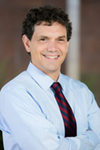
I began my critical care fellowship at NIH in 2004 and remained on staff after completing my training, eventually leaving the NIH in 2010. More than medical school or residency, my time at the NIH was the most formative period of my professional career. Critical care training at the NIH is unique in many aspects and begins with the diversity of expertise amongst the senior staff. I was taught at the bedside by critical care attendings who were dually trained in anesthesia, cardiology, infectious diseases and pulmonary medicine and—as a result—had distinctly different approaches to clinical care. The research opportunities at NIH are equally diverse and robust. NIH critical care fellows are encouraged to pursue their research interests and have opportunities to collaborate with investigators across the National Institutes. Finally, my NIH mentors and former colleagues continue to play and active role in my career. Whether I am faced with a difficult clinical question or I am in need of career advice, I continue to seek wise counsel from my friends at the NIH.
Daniel A. Sweeney, MD
CCMD Position: Critical Care Medicine Fellow, Class of 2004

I completed my critical care fellowship at the NIH in 2017 after previously completing an infectious disease fellowship. I went on the University of Virginia where I was hired into the Pulmonary and Critical Care Division and have leadership roles in both the medical center and the department of medicine. My experience at the NIH was invaluable as I was able to easily network within both my fields with the backing of the critical care faculty at the NIH. There is arguably no single entity within academic medicine that has more recognition that the NIH. Whenever I want to make a connection with another physician-leader, I know that my experience at the NIH will consistently become a leading point into a productive discussion. Moreover, honing my skills at the Clinical Center–where medicine is practice at the apex of science and discovery–left me with a wealth of learning and clinical experience that I would not have gained anywhere else.
Taison Bell, MD
CCMD Position: Critical Care Medicine Fellow, Class of 2015

I completed the NIH-Pitt combined program for my pulmonary and critical care medicine training in 2015. Since then, I have remained in academic medicine, pursuing a career as an independent physician-scientist studying lung injury and repair. The NIH critical care fellowship offered unique training opportunities to help me succeed in the field of critical care medicine. My time spent as an NIH fellow provided me with excellent clinical as well as research training, both of which are necessary to be a complete physician-scientist. By rotating through ICUs in the NIH Clinical Center and inner-city hospitals in DC and Maryland area, NIH fellows are exposed to a breadth and depth of ICU pathologies matched by few other programs, ranging from the commonest of diseases to those one would only find in case reports. The senior staff take their time to guide fellows through a logical approach to patient management based on physiology, and help them understand the rationale behind cutting-edge experimental therapies given in the Clinical Center. This unique experience has certainly helped me formulate research questions that are fundamentally important and relevant to the care of critically ill patients. Another advantage of the NIH critical care fellowship is strong and invested mentorship. The senior staff genuinely care about the follows' career development, and help with networking even after graduation. Many of my life time mentors are themselves graduates of the NIH critical care fellowship, and have helped me greatly in successfully navigating academic medicine. Because of the training and mentorship I have received from my time at the NIH, I have been able to remain academically active with multiple publications and securing my own research funding, as well as maintain a high level of clinical competence as a critical care physician. I don't think anyone can ask for more from a fellowship program.
SeungHye Han, MD, MPH
CCMD Position: Critical Care Medicine Fellow, Class of 2011
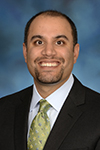
I joined the Critical Care Medicine Department at NIH as a fellow in 2005 and completed my training in 2009. Upon completion, I joined the faculty at the University of Maryland School of Medicine in the Division of Pulmonary & Critical Care Medicine. The clinical and research foundation I gained as a fellow at NIH has undoubtedly shaped who I am and resulted in a rewarding career that has taken a few twists and turns along the way. I have gone from being a thermobiologist studying the effect of temperature on lung injury to a medical educator focused on trainees at all levels. From the very beginning it was clear to me that CCMD's goal was to train stellar clinicians, astute researchers, and the next generation of leaders in the field. When I became a Program Director for the PCCM fellowship program at Maryland in 2014, I looked to many of my CCMD mentors for guidance and advice. In addition, it was never a question of whether I should get involved in national and international organizations, just a question of how I should get involved and what difference can I make in the field. CCMD opened many doors for me and for this I am truly grateful. In July 2019, I will become the Associate Chief for Education and Faculty Affairs in the Division of Pulmonary and Critical Care Medicine and the Assistant Dean for Curriculum at the University of Maryland School of Medicine. I am confident that I would not be where I am today without the training provided at NIH in the Critical Care Medicine Department.
Nirav G. Shah, MD, FCCP
CCMD Position: Critical Care Medicine Fellow, Class of 2005

NIH CCMD immediately struck me as a place willing to think out of the box. As an internal medicine-pediatrics trained person I was surprised they not only welcomed my dual training in CCM but could point to other examples of recent trainees. This was very encouraging! Performing research at NIH was like being a kid in a candy shop with opportunities to collaborate with numerous international scientific leaders who cared only about my ideas and the energy and rigor with which I tested them. The multidisciplinary clinical training I received in adult critical care was analogous to what we provide at Pitt and within pediatric CCM (but distinct from most adult CCM programs). This provided a wonderful synergy which allowed me to learn about my pediatric patients while on my "adult" time and vice versa. The icing on the cake was supportive, intelligent and energetic faculty who have continued to mentor me to this day and a beautiful, invigorating campus where I could bike to work daily and travel the scientific world within a 1 mile walk.
Cameron Dezfulian, MD, FAHA
CCMD Position: Critical Care Medicine Fellow, Class of 2003
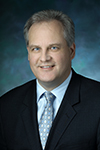
I joined the CCMD team after completing a stroke fellowship at the NINDS in 2001, and completing my Neurology residency at the Mayo clinic in 1998. After joining the CCMD, I was exposed to difficult and complex patients with unimaginable problems that could only be seen at the NIH in the context of their rare diseases program. These patients had a vast array of complex physiological issues and we used the newest state of the art techniques at that time including CVVHD, ECMO, and oscillating ventilation. We had an array of exotic imaging tools and most importantly where exposed to innovative pharmaceutical agents and biologics in the context of the transplant mission and our exposure to rare diseases. Many of these tools were not available any other place at that time, and many eventually became commonplace in medical ICUs by the end of the decade. During my time, I was worked with the most advanced bench-top techniques that enabled me to do research well beyond my training. This process allowed for the incorporation of techniques which again where only available in advanced research facilities such as the NIH. I was able to identify increased transcriptional activity in a gene and apply this bench research to a human epidemiological cohort prior to the sequencing of the human genome. The mentorship I received was outstanding with a group of attending’s who were all in when it came to supporting my career, even though it was clear that much of my research would be outside of their research career efforts. It was this generosity of time and person, which has led to many long time friendships and collaborations. I was introduced to the best translational research, the best clinical trials development, and the best clinical trials execution. This experience has been invaluable in my work at Johns Hopkins where I have now been involved in genomic, clinical observational and clinical trials work. My experience was unique among my present peers and am grateful for the opportunity of training there.
Paul Nyquist, MD/MPH, FAHA, FCCM, FANA, FAAN
CCMD Position: Critical Care Medicine Fellow, Class of 2001

